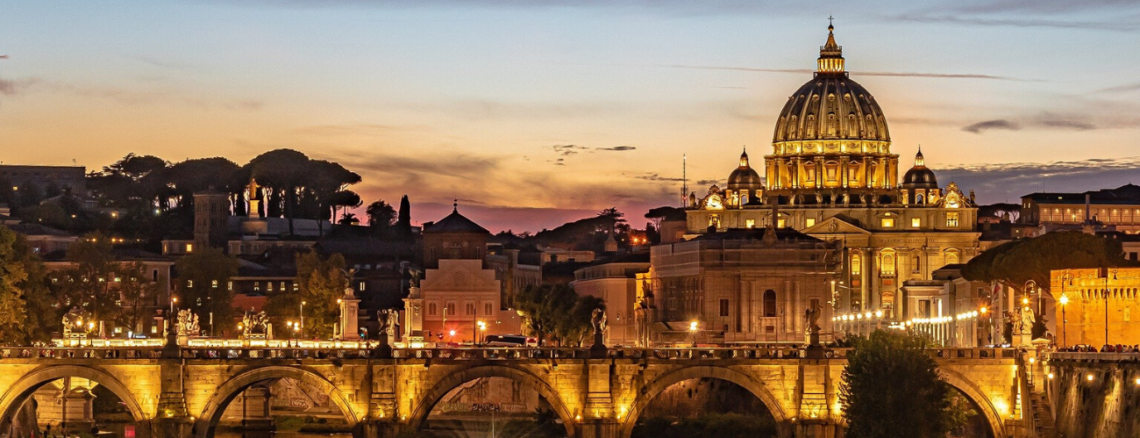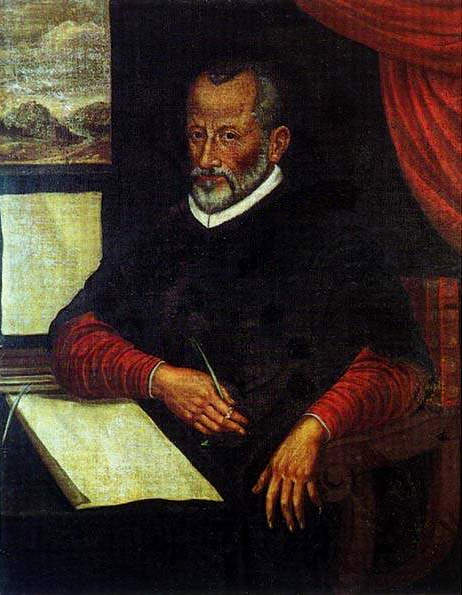
Performing with Palestrina, or Classical Music for Babies and Toddlers

Today my son, Little M, and I want to take you back a little bit before the Baroque period to explore some music from the Renaissance!
Little M is currently a one-year-old, so he’s a baby that’s just about to become a fast and furious toddler! Even though he’s all over the place and into everything right now, he’ll still slow down to listen to this music. He loves watching singers, especially, and he literally crawl-runs over to the computer when he hears the beginning of a piece of classical music!
The Renaissance period of classical music lasted from approximately 1400–1600. It came right before the Baroque period, which was roughly from 1600–1750.
I always say that the Baroque period–and other historical periods–are “roughly” or “approximately” from blah to blah because there was always stylistic overlap between eras. The world didn’t just wake up on January 1st of the year 1600 and find themselves in the Baroque period, for example! It was a much more gradual shift.
Also, if you want to learn more about Baroque music, check out our post called “What is Baroque Music?”.
A cappella vocal music–which is music for singers without any instruments–reached its peak during the Renaissance. The composer of today’s selection, Giovanni Pierluigi da Palestrina (c1526–1594), was one the very best composers in this genre. His music is looked at today as sort of the “gold standard” of what’s called Renaissance polyphony, which is vocal music for many voices singing together (“poly” means “many” in Latin).
Before we get to the music, here’s a short bio on Palestrina to get you up to speed.

Palestrina’s Bio
Giovanni Pierluigi da Palestrina (c1526–1594) was probably born in Palestrina, Italy, but we’re not sure exactly when. The “da Palestrina” part of his name literally translates to “from Palestrina.”
The town of Palestrina is near Rome, so it is no surprise that Palestrina the musician and composer ended up in Rome by his teenage years. He went back to the town of Palestrina for a while, but spent most of his life living and working in Rome.
Palestrina worked for a while as an organist in his hometown. But then his position was majorly upgraded and he starting working for Pope Julius III in St. Peter’s Basilica in Rome. He worked as the musical director at various other churches in Rome, and these positions included composing a lot of vocal music.
Near the end of his life he finally had enough money to focus even more on composing music. He continuing working at churches in Rome, however, until his death in 1594. He is buried in St. Peter’s Basilica, though it’s unclear now exactly where. (St. Peter’s is gigantic–it is literally the largest church in the world!)

The Music
Palestrina’s “Quando dal terzo cielo” for six voices is the music Little M and I want to share with you today.
In the video, all six parts are sung by men, which is how it would have been performed originally. Polyphonic vocal music (What’s that? See above.) of the Renaissance usually didn’t include women singers because much of the music was intended for the church (although this piece was not) and women weren’t allowed to sing in church at that time.
Instead, some of the men would sing in the high, female vocal range. Today we call these men countertenors, and you’ll hear and see two of them in this piece. The other four singers are tenors, baritones, and basses, which sing in the ranges we more commonly associate with the male voice.
The title of this piece–“Quando dal terzo cielo”–means “When from the third heaven” it Italian, and it is about the myological diety Dori. The song praises Dori’s great beauty and delightful attitude.
Despite only talking about Dori, the song was actually a way to flatter the wife of the man who paid to have the piece written. It would have been considered rude to name the man’s wife directly, so this was one way to get around that!
We hope you enjoy the music! Let us know what you think by leaving us a comment below!
This performance is by the King’s Singers. Check them out on their website or their YouTube channel!
If you want to check out the whole CD, you can find it on Amazon by clicking the image below. (Disclaimer: We may receive compensation [at no extra cost to you!] when you click on the links to this CD.)


